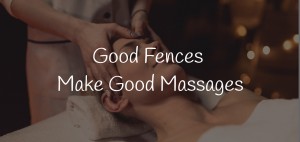Good Fences Make Good Massages…
The other day, whilst talking to massage therapist friends about the best and worst places to do massage, we came up with lots of candidates for best, but the worst won hands down: beauty salons. Yes, it has happened to many massage therapists. It may have been a fill-in job during massage school or a […]

